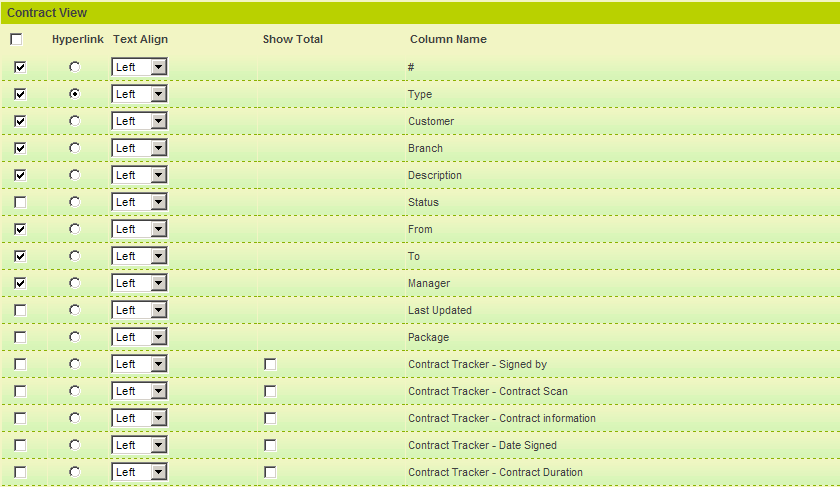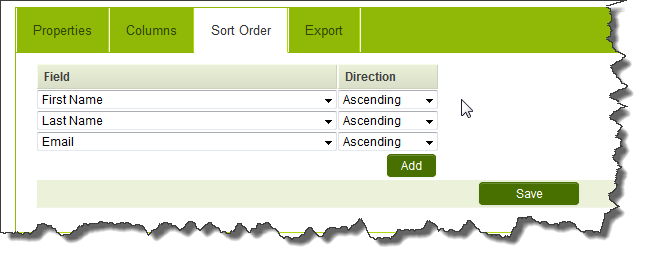List View Overview
Note: Click here to watch a video on creating and editing List Views.
The List View allows you to define which Standard and Custom Fields are displayed when viewing a list of records. You can also define the sequence in which the records are displayed.
- Within the Universal Tracking Application the Settings page allows you to define the list view for Level 1, Level 2 and Level 3 as well as the Accounts and/or Contacts sections on the Level 1 records (if the Contacts/Accounts Standard Fields have been enabled).
- The List View defined for Level 2 will apply both to the list view on the Level 2 tab, and the list of associated Level 2s at the bottom of a Level 1 record, if shown. Similarly the Level 3 list view applies to the Level 3s listed at the bottom of a Level 2 record.
- If Display as Tab has been enabled for a Level 2 Type you can customize the List View for the items listed on that tab.
- If you use the same Tab Label for more than one Level 2 Type (thus grouping multiple Types onto the same Tab) it will also use the List View configured on the Settings page, the same List View as the Other Level 2 Types tab.
- Within most other Applications you can set the List View via the Settings page.
- Some list views contain special items and cannot be configured, such as the list of Applicants on an Opportunity within Sales Tracking.
- When viewing the list of Contacts you can set the List View by clicking on the Edit View tab:
- Note: changes here will affect the Contacts List View throughout SmartSimple (UTA Contacts Tab, Search People, Sales Tracking, etc.)
Contents
Defining a List View
Click into any List View shortcut to display the list of fields available:
- Standard Fields are listed at the top of the list, followed by Custom Fields.
- The # field displayed at the top of the list will display a record counter (index) for the items displayed.
- Click the check box on the left of each field to include that field in the List View.
- Click the Hyperlink button to designate a single field that will provide a drill-down to the associated record.
- Text Align defines if the data should be left, centred or right aligned in the column.
- For numeric fields, you can display a total at the bottom of each page by clicking the Show Total check box.
- The Total displayed at the bottom of the column will have the same formatting (example: #.##) as specified in the Custom Field that is being totalled. If no formatting is specified, the total will be displayed to 1 decimal place.
Once you have saved the field list you can set the Display order.
Note: anytime you make changes to the List View page as described above the Field Order settings (described below) will be reset and will need to be re-defined.
Setting the Field Sort Order
Once you have selected the fields to be displayed have saved your list view, the Sort Order tab will appear. In this tab, you can reorder the fields in the list view.
Defining a List View Template
You can customize the list view by clicking on the Template button at the bottom of the List View page.
Note: a basic understanding of HTML may be required to make changes to the List View Templates.
- The Header section can be used to adjust the column headings. You can change the formatting, as well as the column heading displayed.
- The Columns section controls the display of the actual record list view.
- The Order Clause allows you to manage the sequence of records in a more complex way than on the Set Order page.
- For example, if you are trying to arrange your sort order based on a field that has an integer value the sort may not work properly if the data is stored as string. To make this a numeric value to sort do the following:
- In the list view template go to the section of 'Order Clause' and find the field that your looking for based on custom field id.
- Change the value from cf_967517 desc to tbl_967517.valuestr*1 desc; which converts it to a numeric value now.
- For example, if you are trying to arrange your sort order based on a field that has an integer value the sort may not work properly if the data is stored as string. To make this a numeric value to sort do the following:


